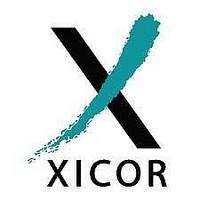X1205 Xicor, X1205 Datasheet - Page 10

X1205
Manufacturer Part Number
X1205
Description
Real Time Clock/Calendar
Manufacturer
Xicor
Datasheet
1.X1205.pdf
(22 pages)
Available stocks
Company
Part Number
Manufacturer
Quantity
Price
Company:
Part Number:
X1205S8
Manufacturer:
INTERSIL
Quantity:
4 693
Part Number:
X1205S8I
Manufacturer:
XICOR
Quantity:
20 000
Part Number:
X1205S8Z
Manufacturer:
INTERSIL
Quantity:
20 000
Part Number:
X1205Z
Manufacturer:
INTERSIL
Quantity:
20 000
X1205 – Preliminary Information
Stop and Write Modes
Stop conditions that terminate write operations must
be sent by the master after sending at least 1 full data
byte and it’s associated ACK signal. If a stop is issued
in the middle of a data byte, or before 1 full data byte +
ACK is sent, then the X1205 resets itself without per-
forming the write. The contents of the array are not
affected.
Acknowledge Polling
Disabling of the inputs during nonvolatile write cycles
can be used to take advantage of the typical 5mS write
cycle time. Once the stop condition is issued to indi-
cate the end of the master’s byte load operation, the
X1205 initiates the internal nonvolatile write cycle.
Acknowledge polling can begin immediately. To do this,
the master issues a start condition followed by the
Slave Address Byte for a write or read operation. If the
X1205 is still busy with the nonvolatile write cycle then
no ACK will be returned. When the X1205 has com-
pleted the write operation, an ACK is returned and the
host can proceed with the read or write operation.
Refer to the flow chart in Figure 9.
Read Operations
There are three basic read operations: Current
Address Read, Random Read, and Sequential Read.
Current Address Read
Internally the X1205 contains an address counter that
maintains the address of the last word read incre-
mented by one. Therefore, if the last read was to
address n, the next read operation would access data
from address n+1. Upon receipt of the Slave Address
Byte with the R/W bit set to one, the X1205 issues an
acknowledge, then transmits eight data bits. The mas-
ter terminates the read operation by not responding
with an acknowledge during the ninth clock and issuing
a stop condition. Refer to Figure 8 for the address,
acknowledge, and data transfer sequence.
REV 1.0.9 8/29/02
Figure 8. Current Address Read Sequence
Signals from
the Master
SDA Bus
Signals from
the Slave
S
a
www.xicor.com
t
r
t
1
1
Address
0
Slave
1
1
1
Figure 9. Acknowledge Polling Sequence
It should be noted that the ninth clock cycle of the read
operation is not a “don’t care.” To terminate a read
operation, the master must either issue a stop condi-
tion during the ninth cycle or hold SDA HIGH during
the ninth clock cycle and then issue a stop condition.
1
1
C
A
K
Cycle complete. Continue
command sequence?
Byte load completed
Enter ACK Polling
by issuing STOP.
Continue normal
Data
(Read or Write)
nonvolatile write
Read or Write
Issue START
Address Byte
Issue Slave
PROCEED
command
returned?
sequence
ACK
Characteristics subject to change without notice.
YES
YES
S
o
p
t
NO
NO
Issue STOP
Issue STOP
10 of 22












